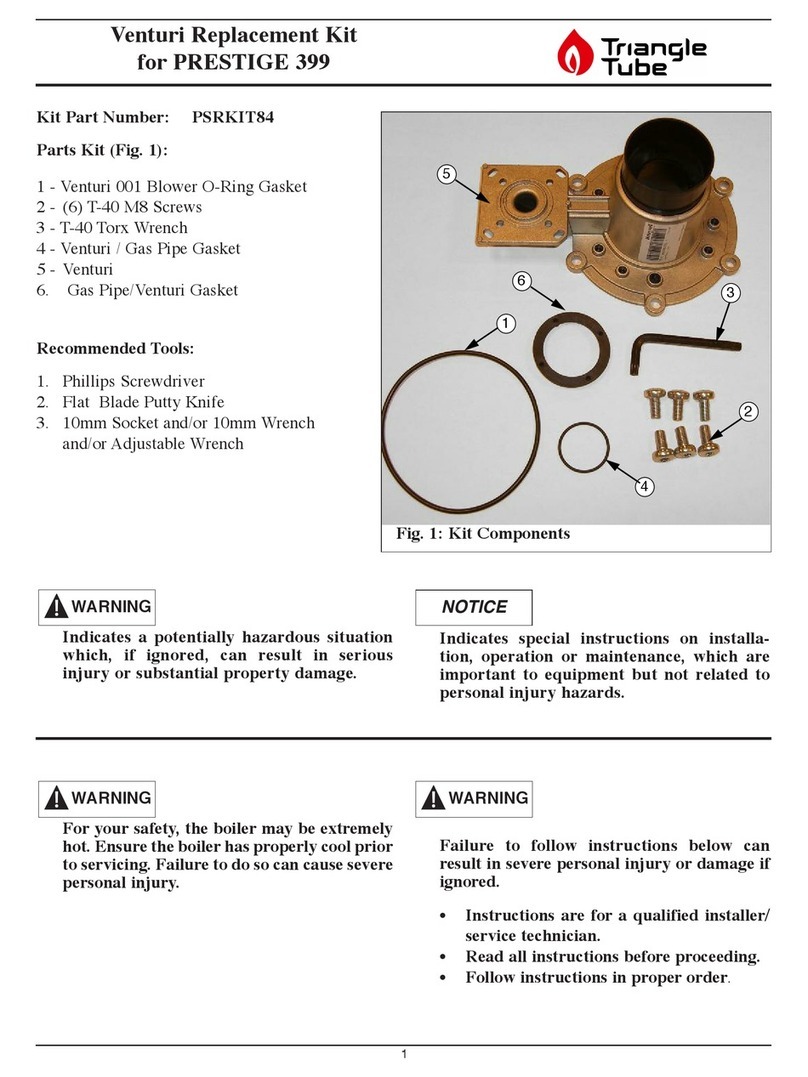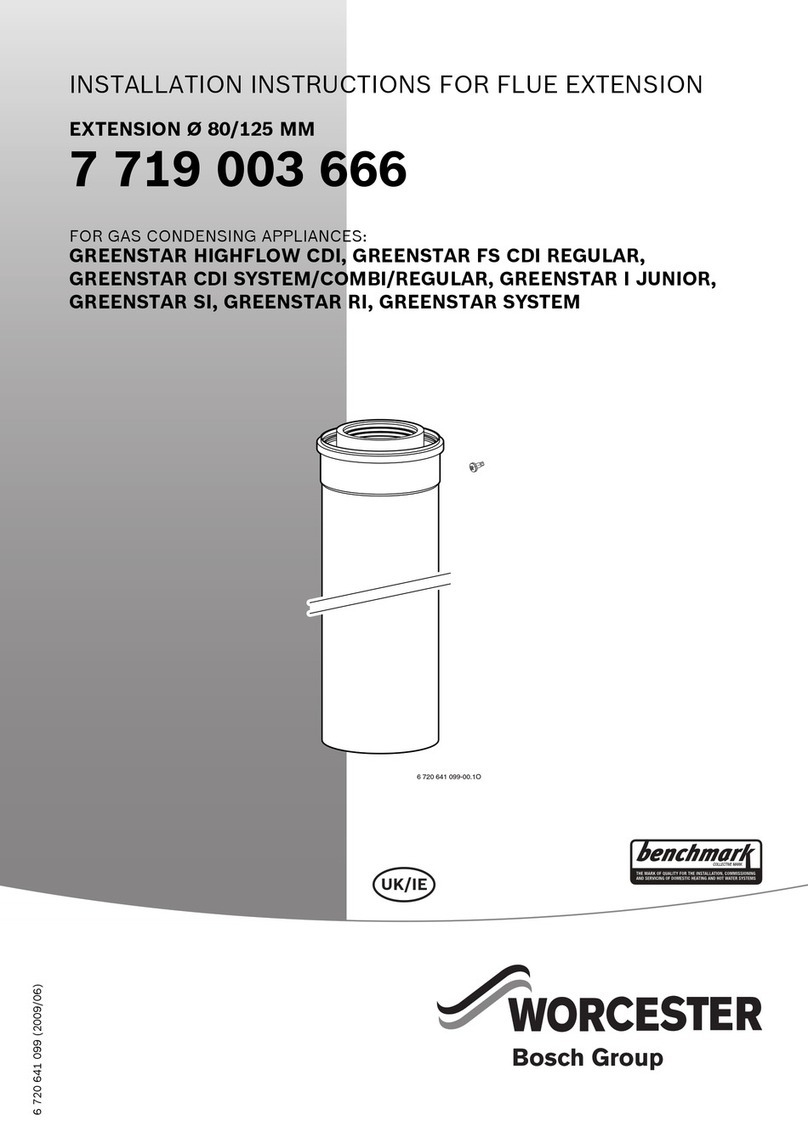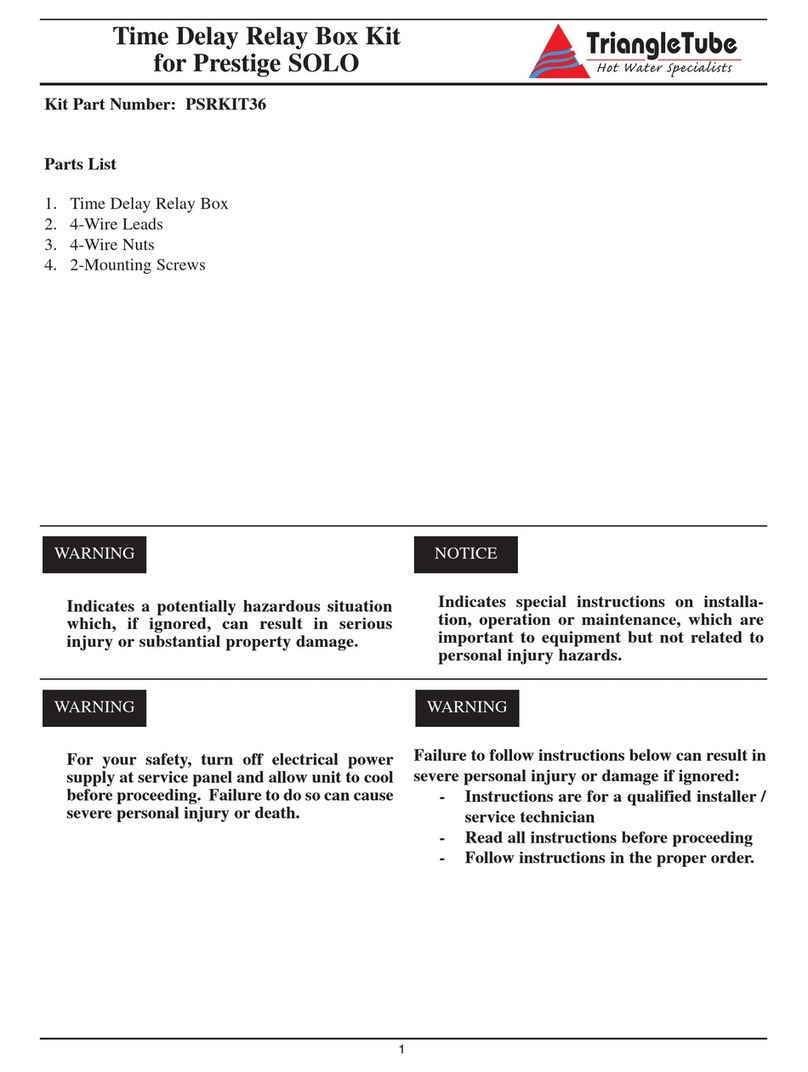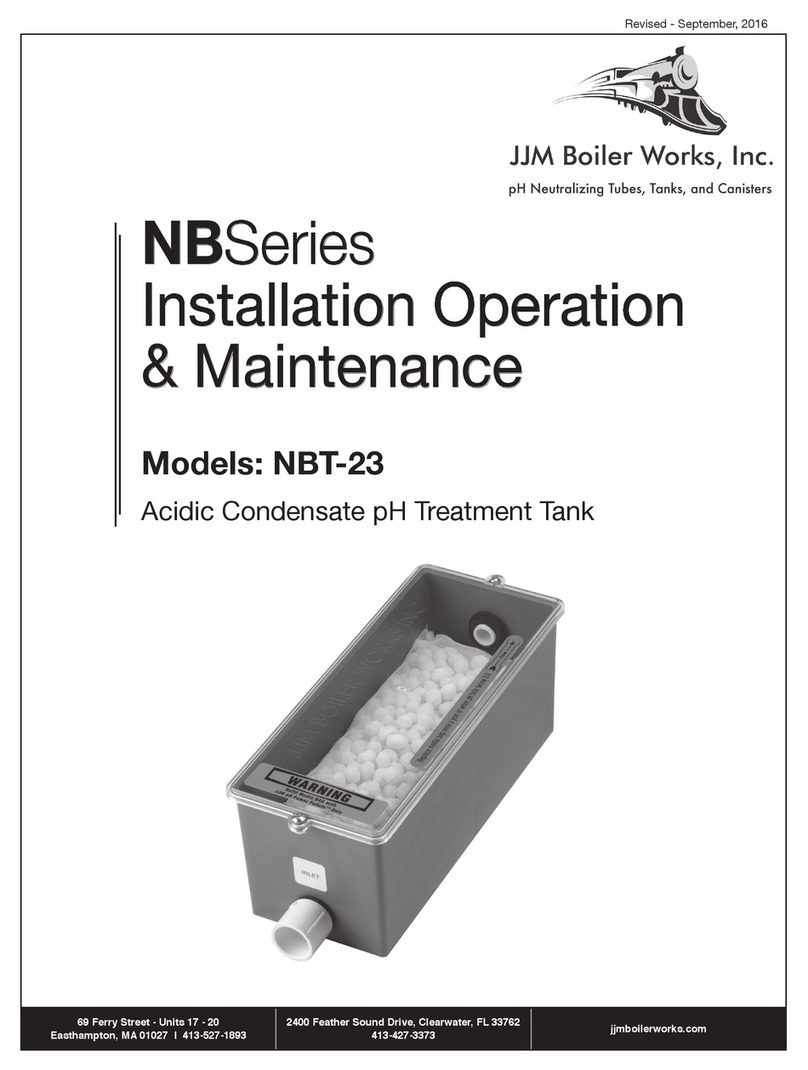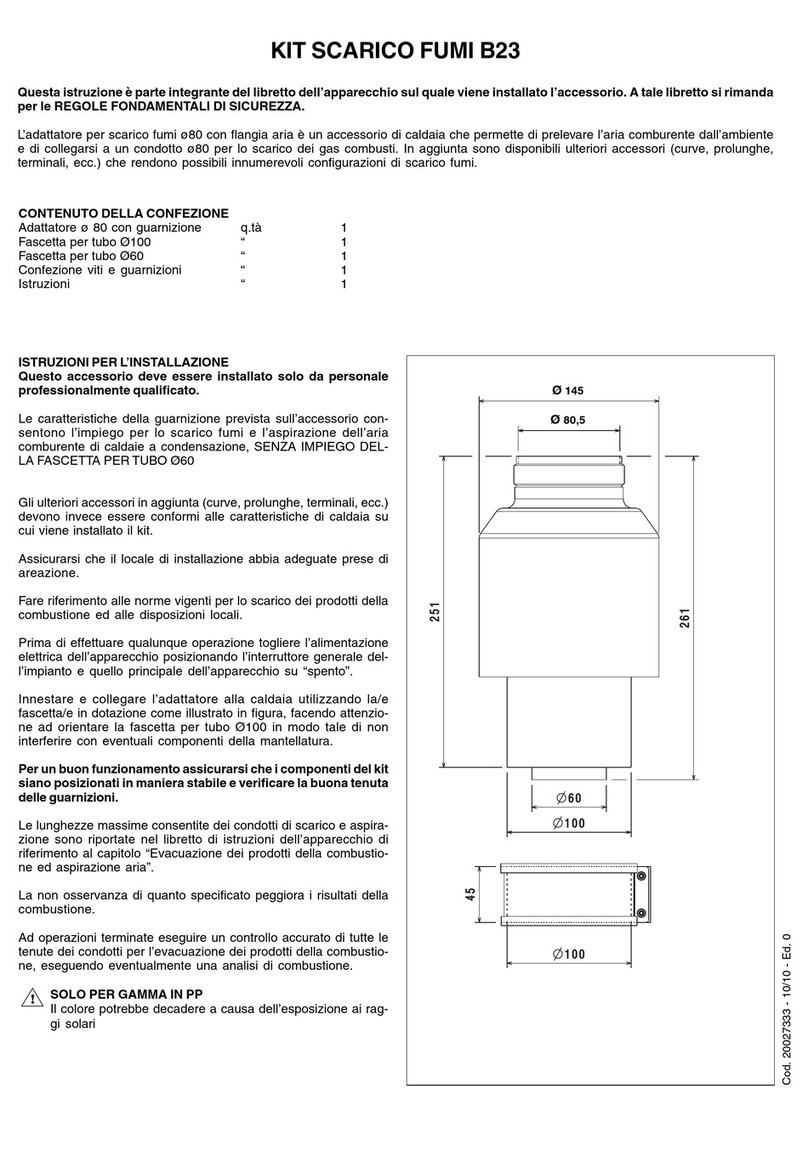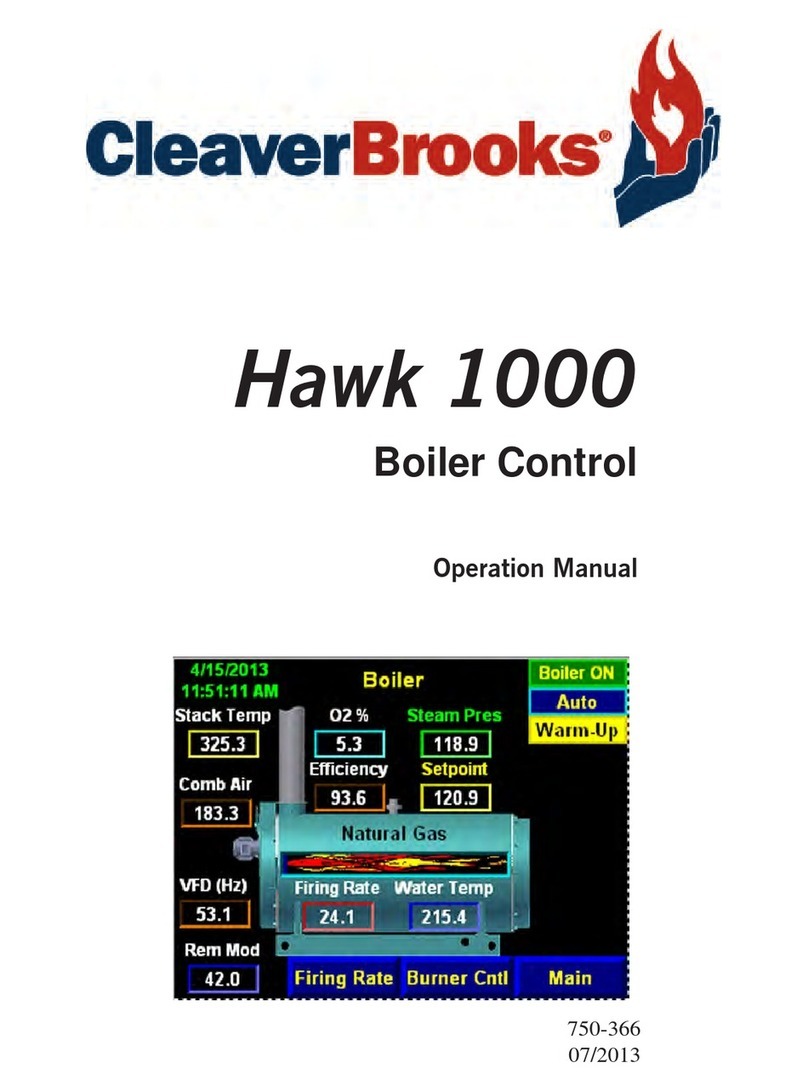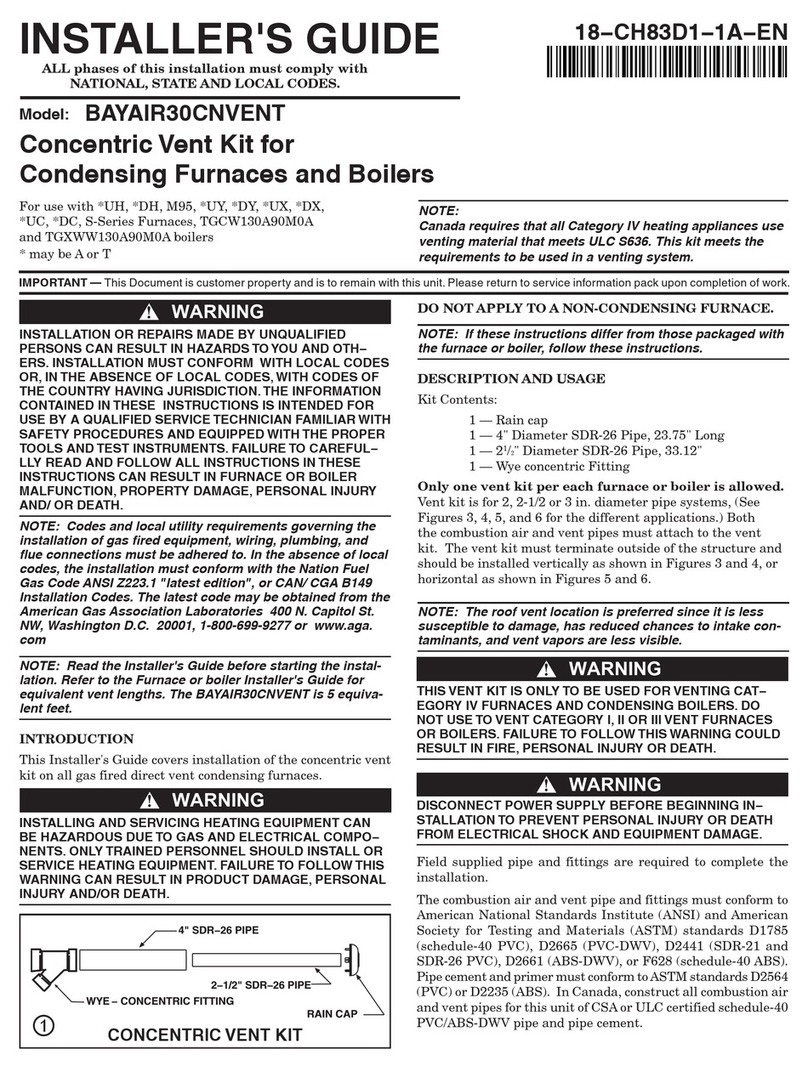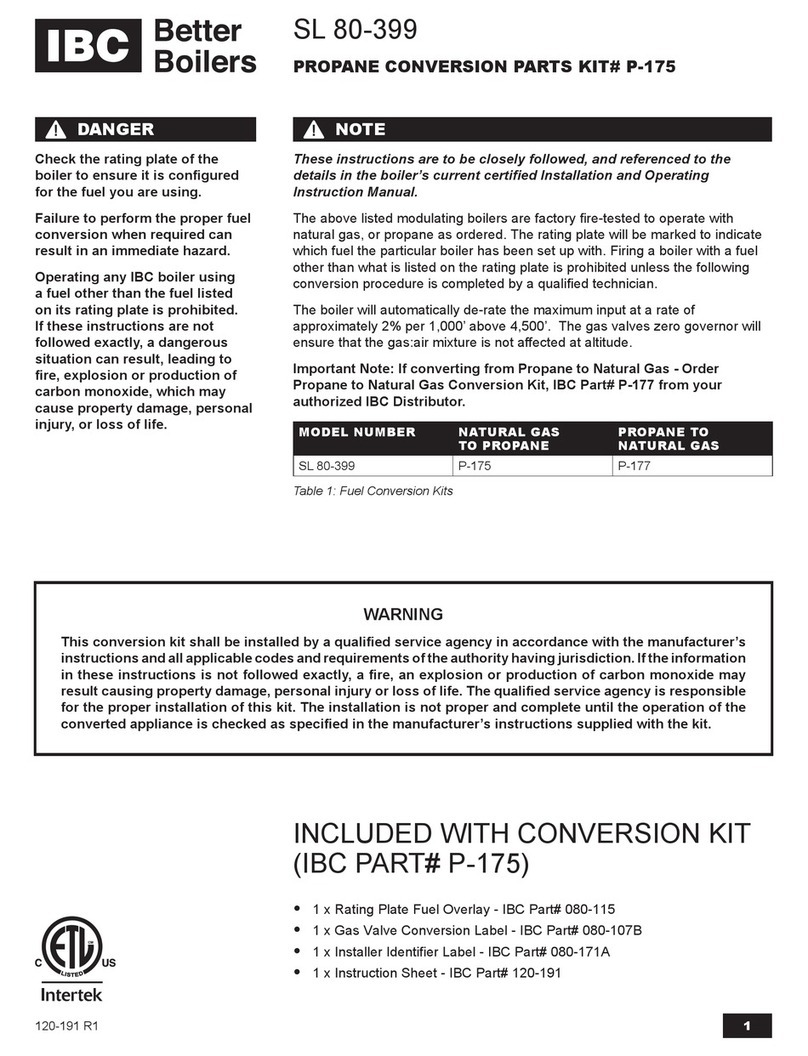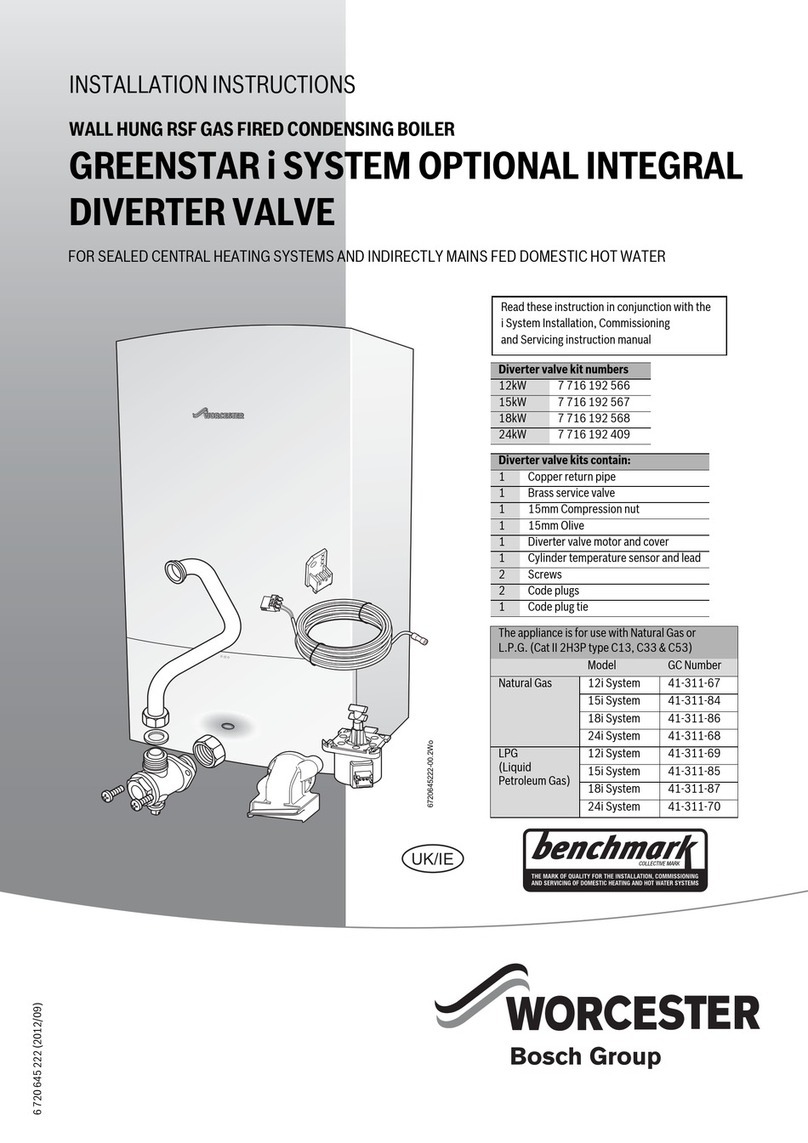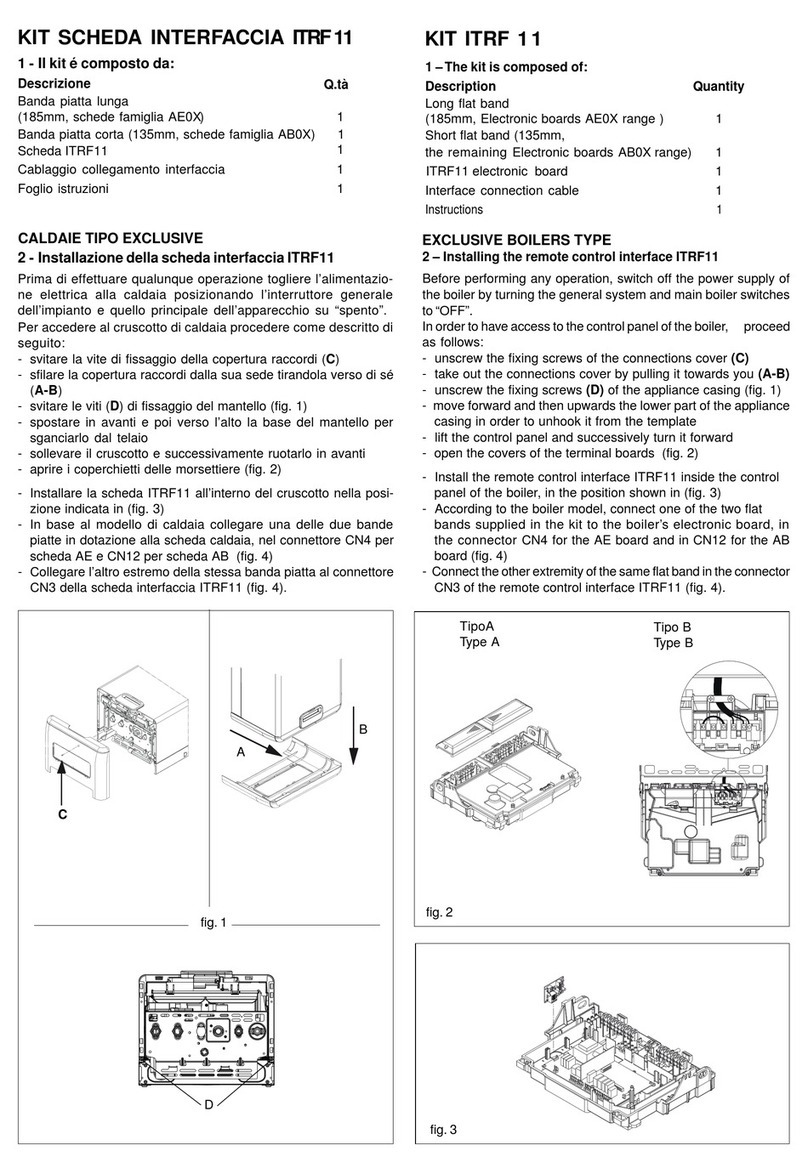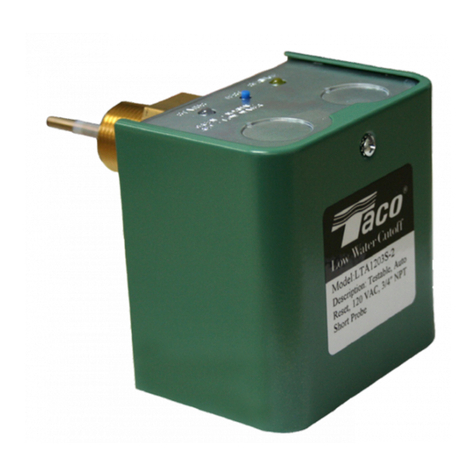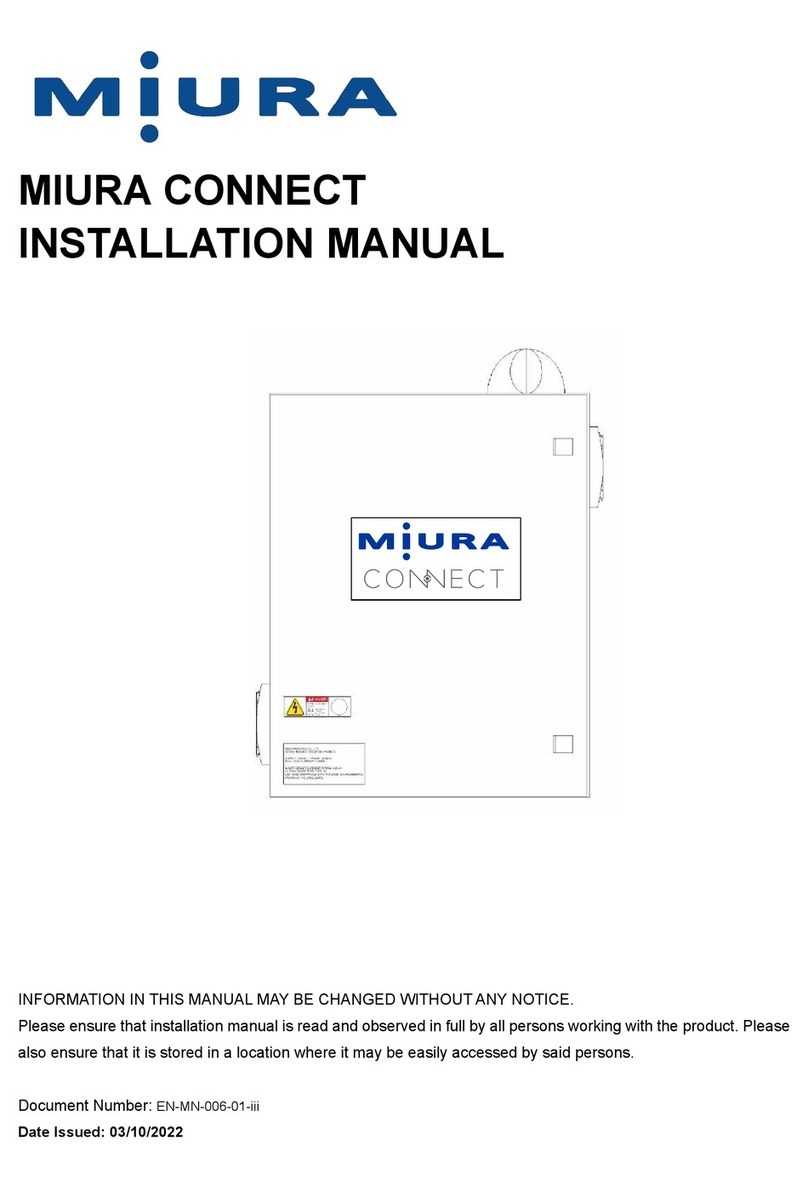
Read before proceeding
Failure to comply with these guidelines could result
in severe personal injury, death or substantial
property damage.
Neutralizer and lines must be wet
• Beforeoperatingtheboilerorfurnace,lltheJMtubeand
trapswithtapwater.NEVERoperatewithtubesorP-traps
dry.
Application restrictions
• Flue gas condensing boilers, furnaces, and flue pipe conden-
sate drains only.
• DO NOT exhaust flue gases through JM tubes, they are not
rated for boiler or furnace flue gases. Operating JM tubes
as exhaust vents can cause injury or death from carbon
monoxide.
• Gas traps must be installed between the boiler, vent drains,
and furnace condensate outlet and the inlet of all JM tubes.
• JM tubes must be installed below system P-traps, boiler,
furnace, and breaching condensate drains.
Combined piping options
Flue pipe condensate drains
• Boiler/furnace condensate drain and flue condensate drain
can be common piped to a neutralizer tube ONLY if the
boiler/furnace is individually vented (NOT connected to a
common vent system).Also, the flue pipe must be terminated
so rain water cannot enter the flue pipe.
• DO NOT connect any flue pipe condensate line to a neutral-
izer tube that serves more than one boiler. Consult factory.
Boiler/furnace condensate line common piping
• DO NOT combine vent condensate drain lines and boiler/
furnace condensate lines if appliances are common vented.
Use a separate JM-series tube for each application. For
individually-vented appliances, vent and condensate drain
lines can be combined.
Recharge tubes regularly
• Tubes should be recharged when pH level moves below 5.0
The pH should be checked regularly (at least twice during the
first year of operation) to determine the required recharging
schedule.
• This may require recharging as often as twice per year for
high-usage systems, such as boiler systems equipped with
indirect water heaters.
• Boiler/furnace applications for space heating only (no DHW)
may require recharging only once per year or when PH falls
below 5.
What is pH?
The pH measurement of a fluid is an indicator of the acidity
or alkalinity. Neutral fluids have pH of 7.0. Acid fluids have pH
below 7. And alkaline fluids have pH above 7 (up to 14). The pH
can be easily measured using litmus paper.
Condensate pH from condensing boilers and furnaces range from
1.9 - 3.5pH. The condensate pH needs to be increased (made
more neutral) to prevent possible damage to cast iron soil pipe,
ABS pipe, septic tanks, plants, wastewater treatment plants and
other materials handling waste water.
JM-series condensate neutralizing tubes
increase pH (reduce acidity).
JM-series residential/commercial flue-side condensate neutral-
izing tubes & tanks are designed to raise the pH level of the
condensate discharged by high-efficiency boilers and warm air
furnaces.
Each increase of 1.0 in pH is a 10-times decrease in acidity. The
pH of condensate is increased by approximately 1.0 to 3.0 after
passing through neutralizing tubes & tanks. (This is a reduction
in acid concentration of from 10 to 1000 times.)
Applying JM-series neutralizing tubes
Condensate can be collected from flue ways and boiler/furnace
condensate trap outlets. See WARNING section at left for guide-
lines on application.
Match neutralizing tubes to boiler/furnace ratings. Use multiple
tubes if needed to handle the load.
Locate the neutralizing tube below the condensate connection
and slightly above the floor drain or inlet to a condensate pump
reservoir (if used).
Follow the guidelines in this manual, the boiler/furnace manual
and all applicable local codes when installing, using and main-
taining JM-series condensate neutralizing tubes.
Installation sequence
1. Before installing boiler or furnace, determine if a mounting pad will
be needed to elevate the boiler or furnace so that the condensate con-
nection will be above bottom of the JM tube OUTLET. See Figure 2
or Figure 3. If needed to obtain the proper elevation relative to a
condensate pump reservoir (when used — see Figure 3).
2. Connect PVC piping from appliance or breaching drains to P-traps
and then from P-trap outlets to either one of the two JM tubes.
3. Connect the JM tube outlet to house drain or condensate pump.
4. Use Teflon tape on all threaded plastic fittings.
5. NOTE — Always consult the local authority regarding any require-
ments concerning flue gas condensate handling codes.
JMseries Condensate Neutralizing Tubes –– Installation/Operation & Maintenance
2
Overview

